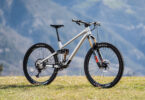All of a sudden it just appeared out of nowhere: the Cannondale Jekyll 29! Whilst most manufacturers tend to celebrate the release of a new bike, the 29” version of Cannondale’s popular enduro bike sneaked into the portfolio of the American manufacturer overnight. It did not escape our eagle-eyes though, and we quickly put one to the test on the trails.
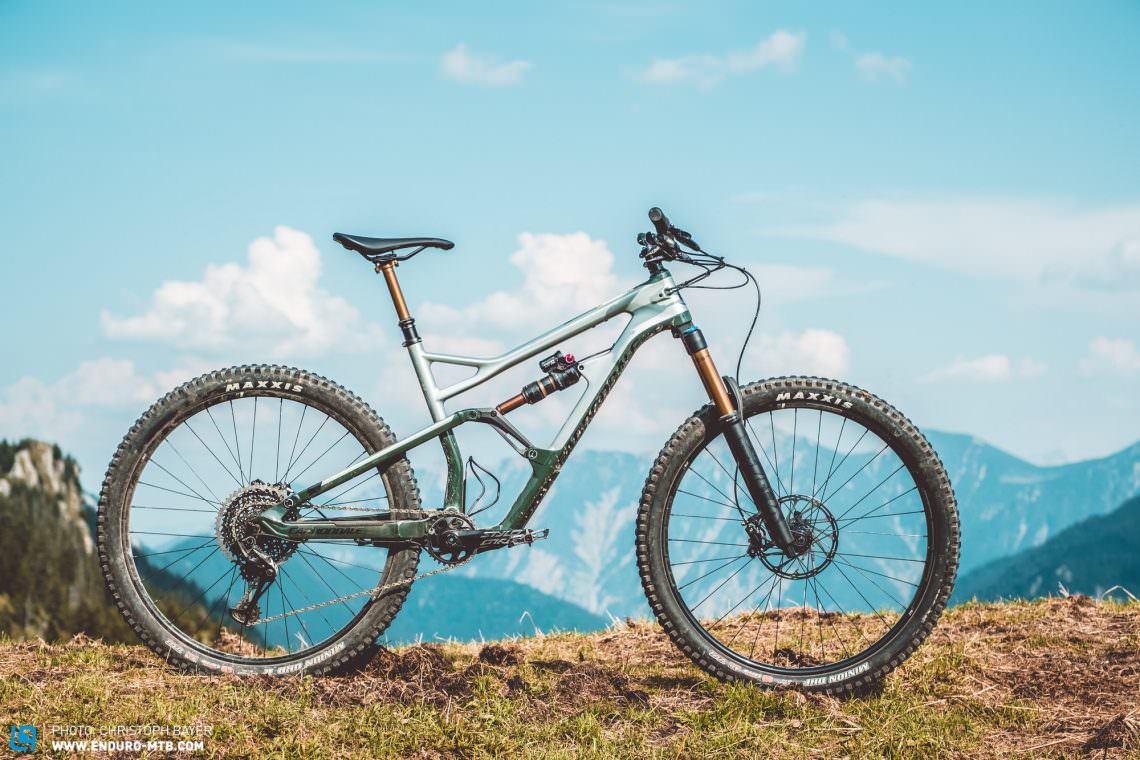
The Cannondale Jekyll was the first bike to take the overall win in the Enduro World Series in 2013. Since then, the bike has changed a lot. Cannondale ditched their polarizing pull-shock system and replaced it with another proprietary shock-system. This was developed in cooperation with FOX and allows you to reduce the rear suspension travel from 150 to 120 mm via a remote directly on the handlebars. In good-old Cannondale fashion this isn’t the Jekyll’s only peculiarity. Like with their 27.5″ version, the engineers at Cannondale combined an asymmetrical rear-end with a special rear wheel-lacing to accomplish Cannondale’s claimed ‘shortest possible chainstay length’. At 442 mm however the chainstays are not that short. Whilst the main triangle of the linkage-driven single-pivot bike is made of carbon, the rear-end is made of aluminium. The top-end version of the Jekyll 29 comes with a price tag of € 6,499 and a dream spec: a new FOX 36 Factory GRIP2 fork, SRAM X01-Eagle drivetrain and Stan’s NoTubes Flow MK3 wheels – components that will make every bike-freak’s heart beat just a little faster. Our only criticism goes to the busy cockpit. With the additional shock-remote sitting on the bars it’ll take you some time working out an intuitive way of reaching for the right lever.
Cannondale Jekyll 29 1 in detail
Fork FOX 36 FLOAT Factory 150 mm
Rear shock FOX FLOAT DPX2 Factory w/ Gemini Dual Mode 150 mm
Drivetrain SRAM X01 Eagle
Brakes SRAM CODE RSC
Handlebar Cannondale C1 Riser Carbon 780 mm
Stem Cannondale C1 40 mm
Seatpost FOX Transfer Kashima 150 mm
Tires MAXXIS Minion DHF/DHR II
Hubs SRAM 900
Rims Stan’s Flow MK3

The high position of the rocker-link might not reflect everyone’s idea of beauty. The good news? There is still enough room for a water bottle.
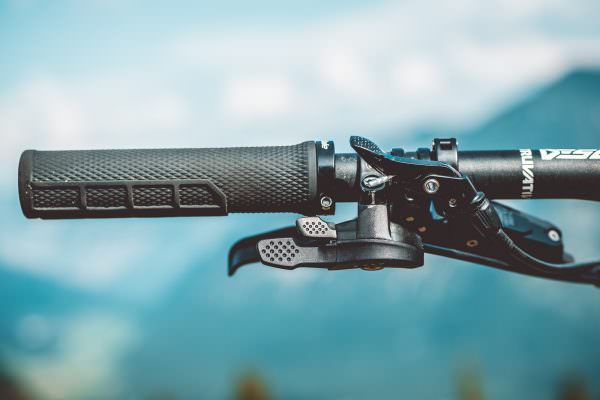
The two modes of the Gemini rear-shock are very practical. Unfortunately the shock- and dropper- remotes accumulate on the handlebars and make for a busy, untidy cockpit.
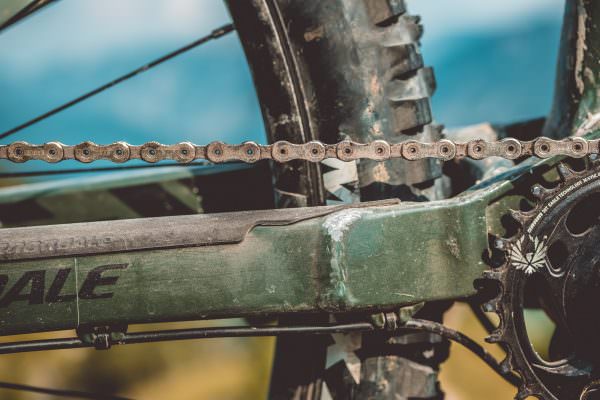
The chainstay guard doesn’t reach over the entire chainstay. After a short time on the trails we could already see significant paint-chips in the weld-seam area.

The Jekyll features internal cable routing but the clamp in the entry ports makes for a silent ride. Annoying rattling noises? Nope!
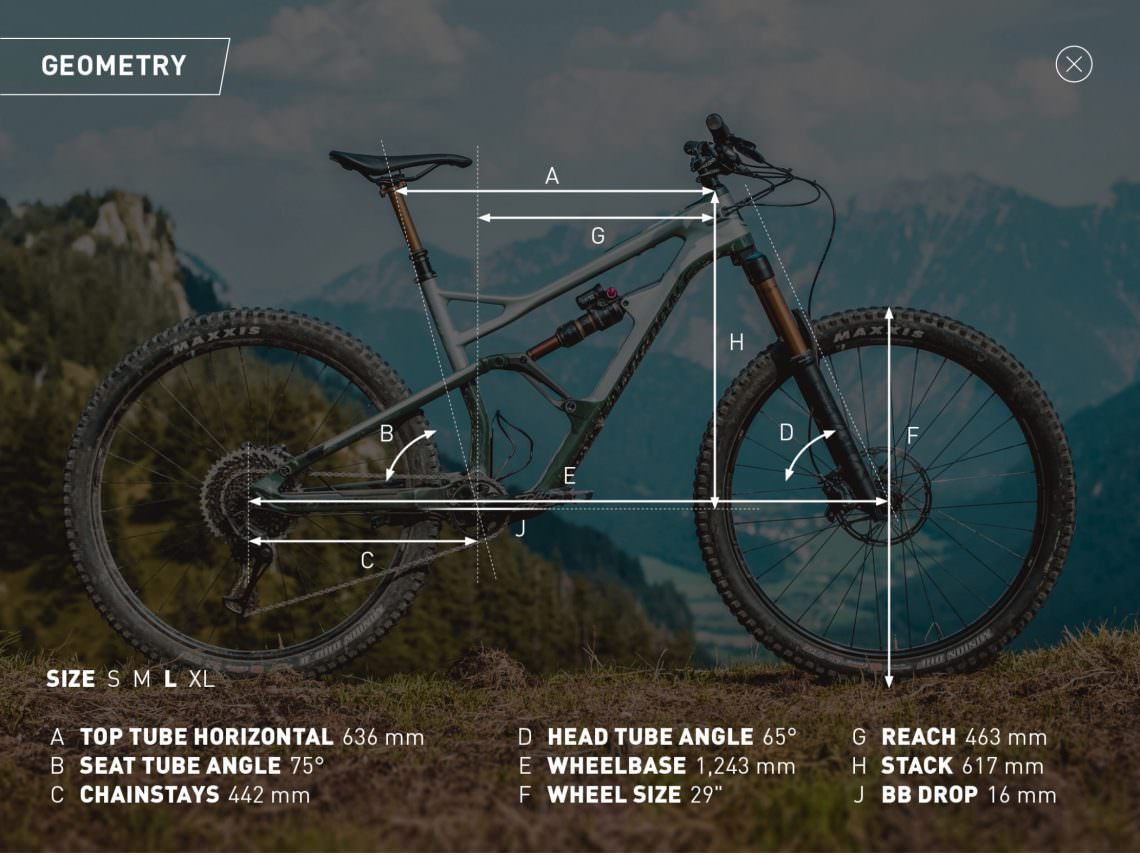
The riding position of the Jekyll 29 feels pleasantly centred. When you activate the (shorter travel) Flow mode the rear-end stiffens up significantly, the bottom bracket rises and the seat angle steepens. Nevertheless the bike still delivers a good amount of traction and ascends incredibly well even on techy climbs — the relatively low front-end is helps here too. If you climb on paved roads for a long time the low-speed compression knob on the rear-shock will make the bike even stiffer and make it climb more efficiently. However, we wouldn’t recommend this on technical terrain.

Open your eyes! The Jekyll requires a great deal of concentration — otherwise you’ll fly over the bars in no time
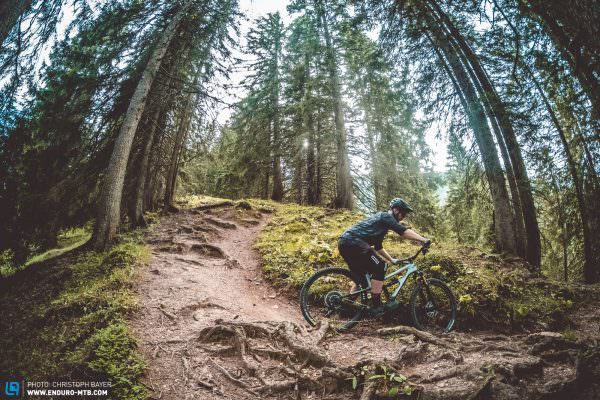
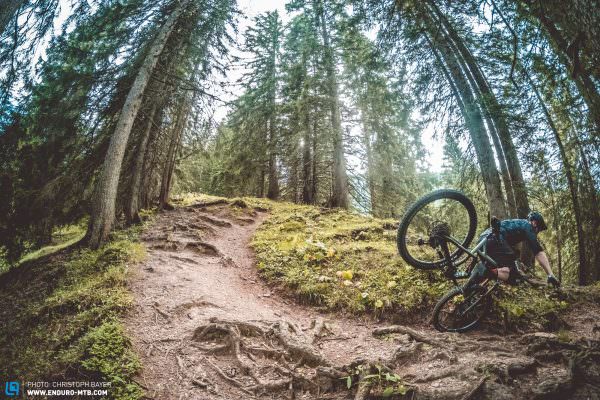
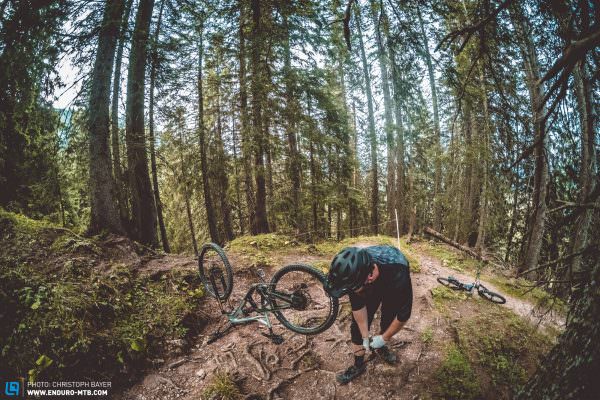
The Jekyll 29 feels as playful on descents as is does on climbs. When the trail gets challenging, the Jekyll does require a more proactive riding style. Due to the high bottom bracket and the low front-end you won’t feel completely at one with the bike, even using the lower, longer travel, Hustle mode. At high speeds the Jekyll calls for commitment and caution. Despite its sensitive and defined rear-end and the slack 65° head angle, the bike lacks smoothness — especially when compared with other bikes in its class. At the same time you’ll have to shift your body weight very consciously in corners to avoid drifting off with either the front- or the rear-wheel. That said, if you’re a loose rider the Cannondale Jekyll 29 is tons of fun. But on steeper terrain the low front-end pulls your weight forward and demands a great deal of strength and control. Even handlebars with more rise or more spacers under the stem didn’t seem to improve the bikes manners. What if you just lean back and let the bike do the rest? Not as simple with the Jekyll. It takes skills and experience to compensate for the unbalanced handling of the Jekyll.
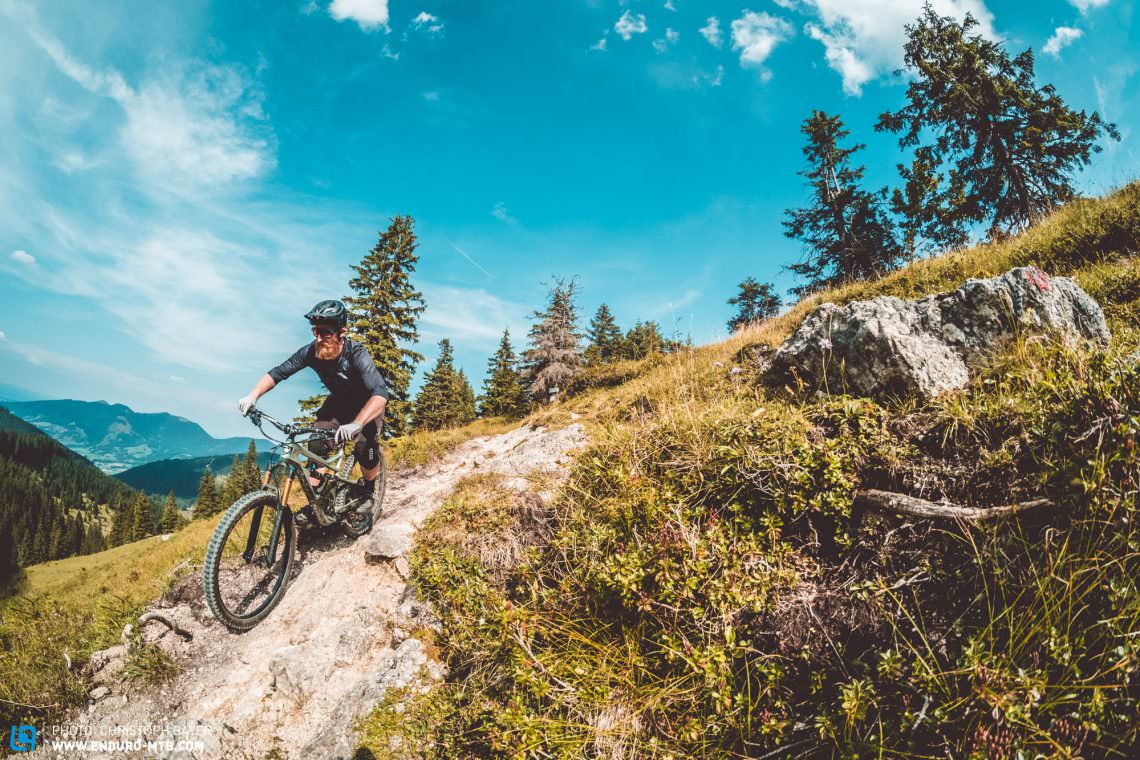
27.5” or 29”? The 27.5” version of the Jekyll feels way more balanced
The suspension is very defined. The rear-end responds sensitively and provides lots of feedback — and doesn’t sag away even with high speed hits. The bike is great fun on mellow, flowy trails and convinced us with a very smooth ride, lots of pop and nimble handling.
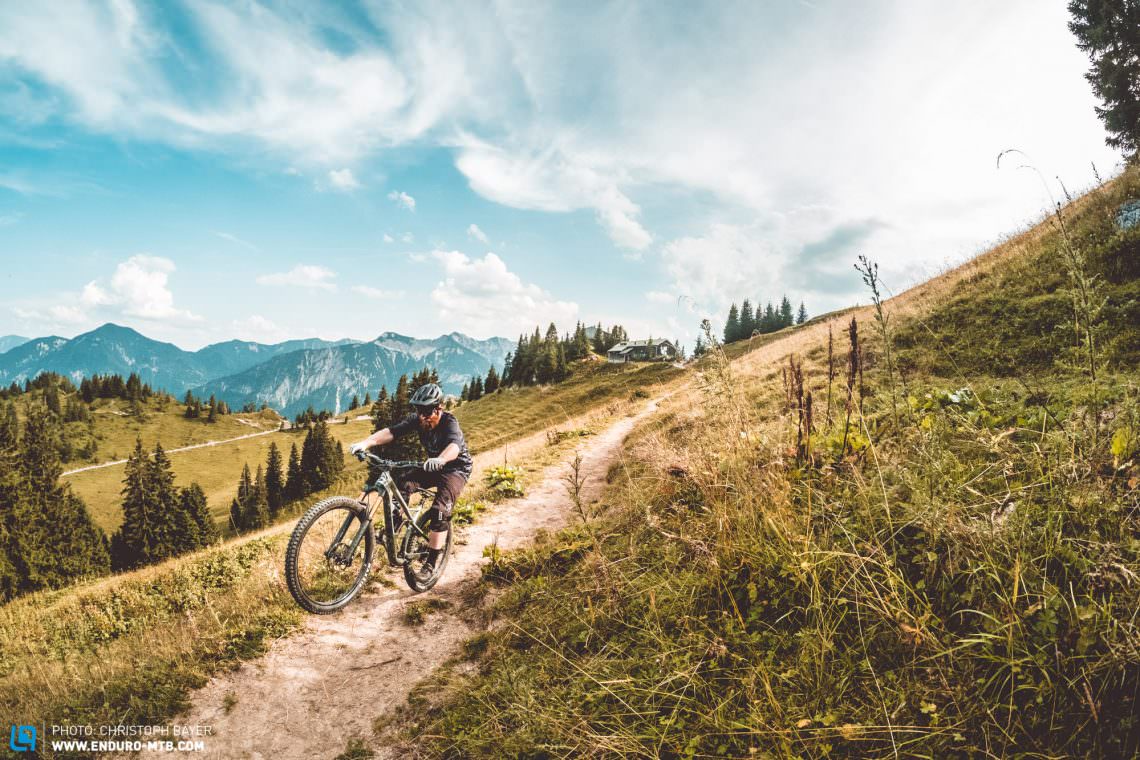
Conclusion
The Cannondale Jekyll 29 convinced us with its good climbing characteristics, superb rear-end and harmonious spec. Sadly, the unbalanced handling reminds us of early 29er models – quite frankly we expected Cannondale to do better.
Strengths
– Good climbing characteristics
– Top spec
– Good rear-end
Weaknesses
– Handling feels unbalanced
– Crammed cockpit

This article is from ENDURO issue #035
ENDURO Mountainbike Magazine is published in a digital app format in both English and German. Download the app for iOS or Android to read all articles on your tablet or smartphone. 100% free!

Did you enjoy this article? If so, we would be stoked if you decide to support us with a monthly contribution. By becoming a supporter of ENDURO, you will help secure a sustainable future for high-quality mountain bike journalism. Click here to learn more.
Words: Photos: Christoph Bayer, Tobias Reiser






